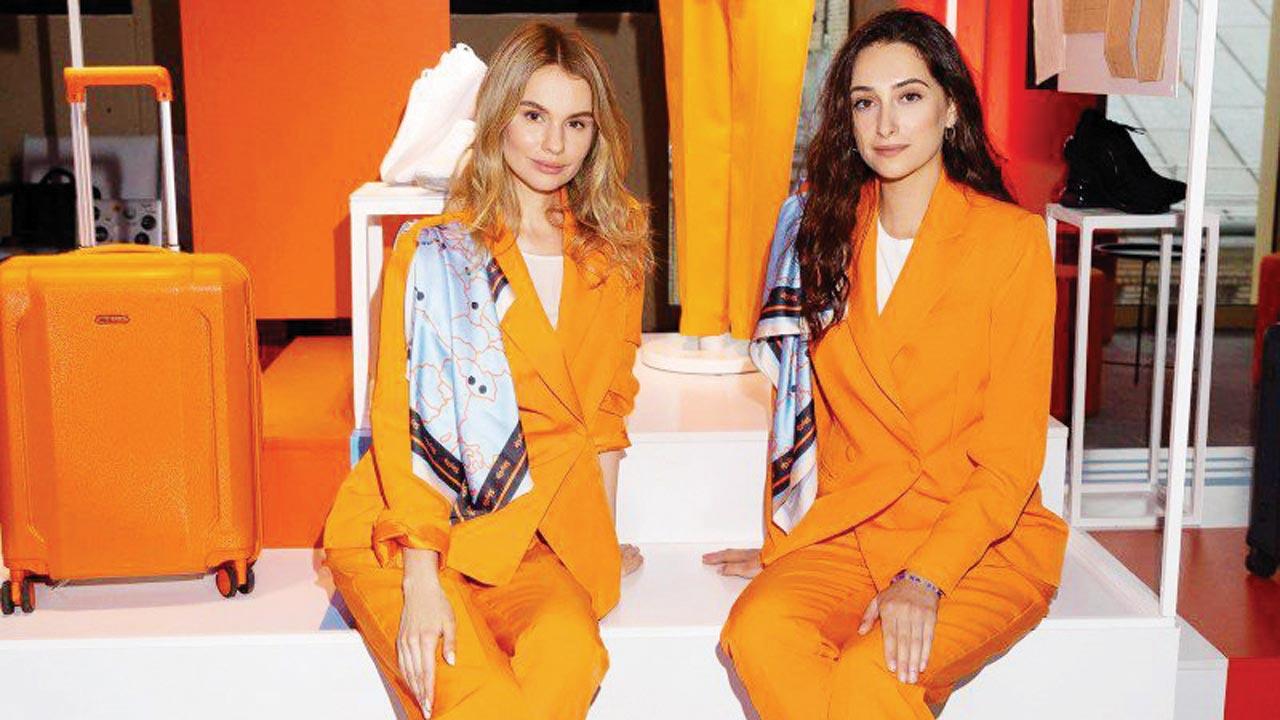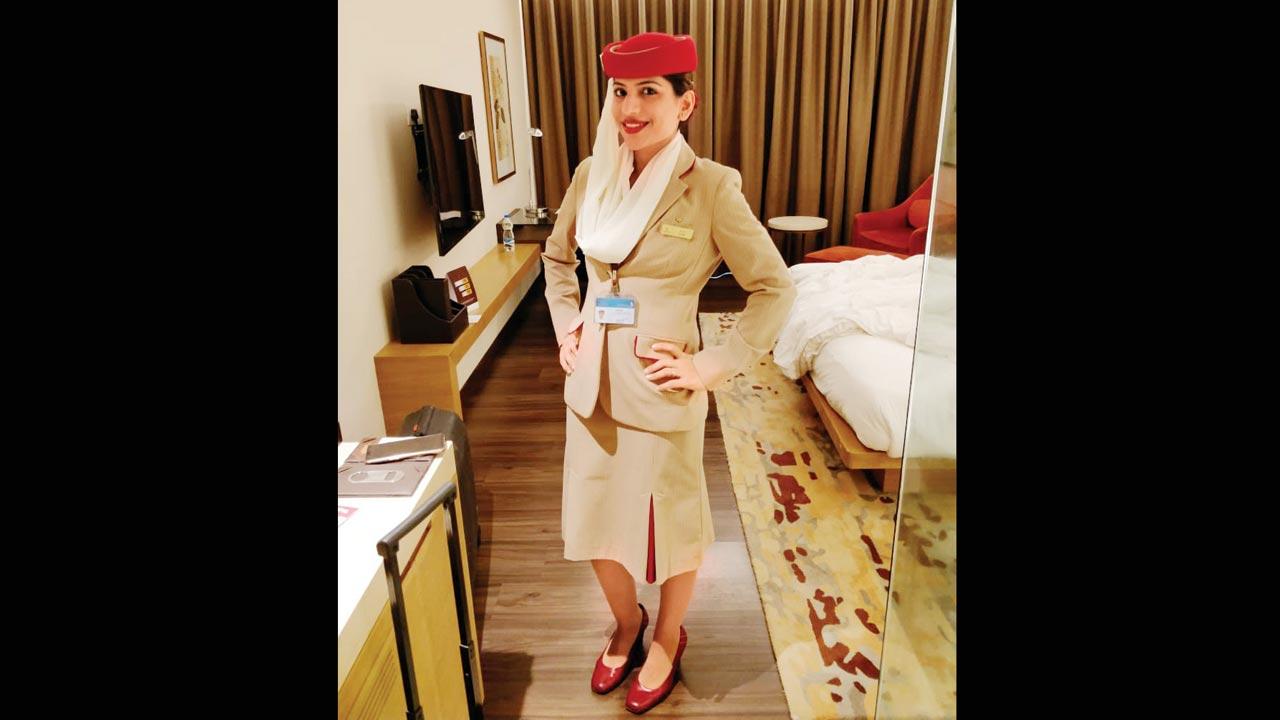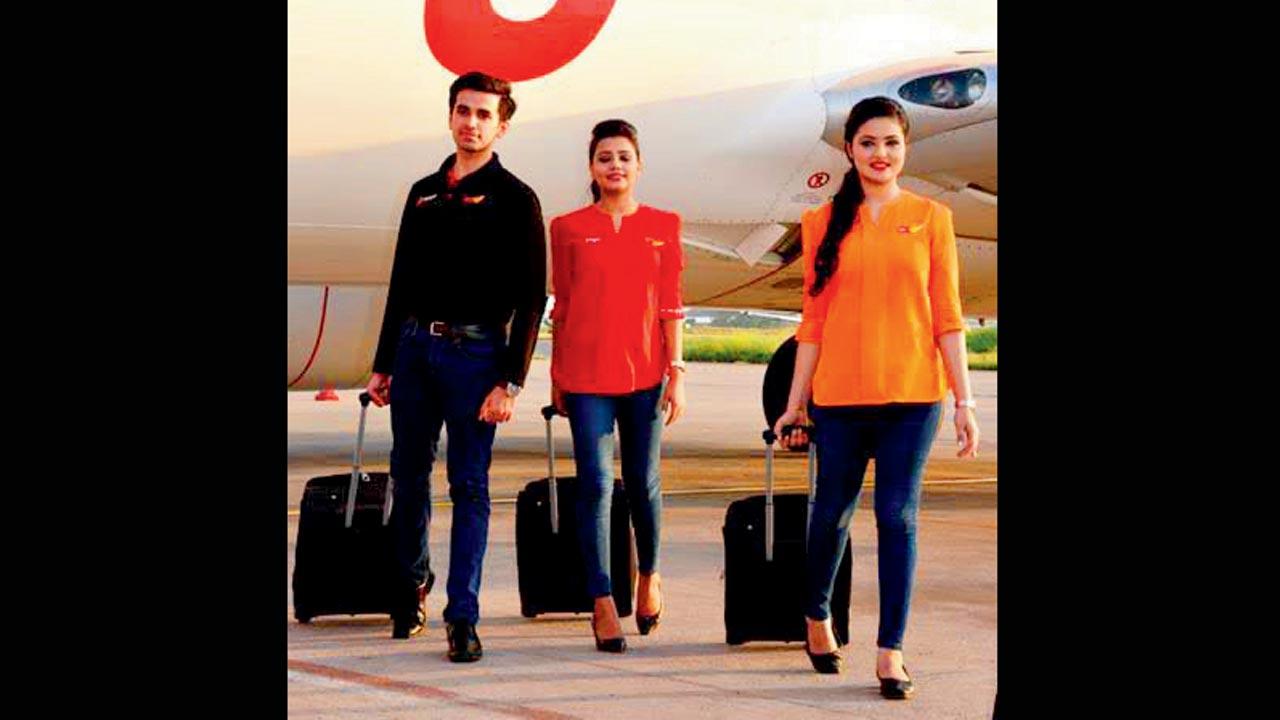With airlines the world over rethinking uniforms to match challenging hours of work, experts and aviation industry insiders say let’s focus on ability of women to do their job well

Sylvia Lazarus, who has worked for Jet Airways and IndiGo, says make-up changes are often more forthcoming than those related to uniform
Former flight attendant Yachika Chopra’s favourite joke was once, “I’m walking to LA, not flying,” when she had a trip scheduled to the US. “Wearing high heels for long hours can be exhausting and causes immense discomfort,” says Goa-based Chopra, who worked with a Middle Eastern airline for 10 years, before quitting in 2020 to start a home-run food business. But a foot ailment is a carry over from her years as flight hostess. “I have a dead muscle in my foot. It happened because when you wear heels for long, the full weight of the body sits on the toes.”
ADVERTISEMENT
It is not surprising that there has been much pushback recently against restricting uniforms and footwear options for cabin crew. In a refreshing move, a Ukrainian airline recently announced its decision to adopt a more comfortable dress code. Founded in 2016, SkyUp, a Ukrainian budget carrier, said, after surveying its staff, it found that high heels, pencil skirts and body hugging blouses were top irritants. The wardrobe modifications were drafted after taking staff choices into account. The airline now offers them the option to wear sneakers and pant suits while on duty.
 SkyUp, a Ukrainian budget-friendly airline, introduced trousers and sneakers for their female flight attendants. Pic/Instagram
SkyUp, a Ukrainian budget-friendly airline, introduced trousers and sneakers for their female flight attendants. Pic/Instagram
In 2019, Aer Lingus and Virgin Atlantic too, announced that female flight attendants would no longer be mandated to wear makeup, which in the cases of stewardesses is heavy and archaic. Along with this, trousers, which were once available only by special request, would now be given to all as a standard uniform option. Virgin Atlantic, in a statement, called this “a significant change for the aviation industry”.
Back home, SpiceJet became the first Indian aviation brand to introduce a “weekend uniform”. This was inspired by the concept of “casual Fridays” in corporate offices. “Our uniforms have adequate elasticity for free movement and ease. The low-heeled footwear too, comes with added cushioning making long hours easy for staff. Our cabin crew wear loose comfortable kurtis and Polo tees along denims three days a week. During festivals, we allow for ethnic outfits too. This not only provides them comfort but also helps break the monotony,” said a SpiceJet spokesperson.
 Yachika Chopra says she was left with a dead muscle in the foot after a decade of wearing heels for long hours at work
Yachika Chopra says she was left with a dead muscle in the foot after a decade of wearing heels for long hours at work
During Chopra’s stint with Dubai-headquartered Emirates, she narrowly missed the opportunity of wearing trousers to work. “They were introduced for a short period only to be discontinued later,” she says.
Sylvia Lazarus, who has worked for Jet Airways and IndiGo, says make-up changes are often more forthcoming than those related to uniform. “Of course, we were all trained in how to bend, pick up baggage and move around while wearing fitting skirts, but I always ended up being mindful about my outfit. After all, you can’t afford wardrobe malfunctions.” Lazarus says many airlines allow flight attendants to wear flat footwear inside the aircraft. “While outside, you have to wear the designated heels, and sometimes you have to cross long distances across terminals to get to the carrier. That’s painful.”
 SpiceJet’s weekend wear is inspired by the concept of casual Fridays in corporate offices
SpiceJet’s weekend wear is inspired by the concept of casual Fridays in corporate offices
In August 2019, when NS Style Salon chain launched an outpost at the Mumbai airport, it saw a steady flow of flight attendants. “Flight attendants work 12-hour shifts, causing them to develop muscle fatigue in the foot area. We have also seen people with toenail trauma resulting from ill-fitting shoes when the toenail starts to appear discoloured and bruised,” says director Amyn Manji. He feels sneakers allow for efficient blood circulation as they are designed for comfort. “It will also limit the chance of injury and allow for good nail and foot hygiene in the long run.”
Dr Chaitanya Shah, a podiatrist who runs Orthofit Healthcare at Mahalaxmi, says the effects of wearing heels for long hours usually become evident after a couple of years, leading to painful bunions, and musculoskeletal pain. “You’ll realise it when you’re touching 50. By then, enough damage has been done.”
 Rutu Mody Kamdar and Amyn Manji
Rutu Mody Kamdar and Amyn Manji
Cliff Muskiet is a Dutchman and former flight attendant, who has a collection of over 1,500 vintage uniforms from 556 airlines, which he blogs about on UniformFreak.com. In an interview with British newspaper, the Guardian, he talks about the evolution of the aviation wardrobe. “In the 1940s and ’50s, the uniforms were mostly military style: tailored jackets, long skirts, dark colours. In the late 1960s, there was a big change as the idea that ‘sex sells’ took hold. Back then, the idea was that stewardesses should attract passengers. The uniforms got very short, with miniskirts and hotpants. You saw a lot of colours and patterns, red, purple, stripes and dots. From the ’90s on, flight uniforms have turned into business outfits. Today, they look far more professional and, actually, pretty boring.”
Singapore Airlines, on the other hand, has advertised a “flawless” visual narrative marked by sarong kebaya uniforms created by French haute couture designer, Pierre Balmain, in 1968. “Singapore Girl was born in the ’70s. A time of fashion, invention and transformation. Yet, she remains timeless across generations. Her beauty, unfading. Her elegance, always in style. Dressed in her signature sarong kebaya, she’s the symbol of Asian hospitality recognised the world over. And she only gets better with age,” reads a line on their website.
Rutu Mody Kamdar is the founder of Jigsaw Brand Consultants, and has a PhD in consumer research. According to her, the concept of air travel was earlier reserved for “the nobles”, or the select few. “Only those who could afford the luxury were lucky enough to fly. This differentiated the classes from the masses and therefore, the need to serve the classes with wine and fine dine eats, by well turned out women and accompanying fanfare. With air travel becoming increasingly common today, this drama-in-air in fact, feels out of context,” she shares. While women have been battling for equal rights on ground, stereotypes continue to be rampant for the aviation industry, thinks Kamdar. “Notice the rigid parameters that are laid down for choosing the right in-flight attendant. It is assumed that the primary customer is male, and he must be titillated by a racily dressed female flight attendant. Rather than focus on the ability of women to do their job well, most airlines give unprecedented importance to looks. It’s time for airlines to reexamine themselves and make their requirements inclusive.”
 Subscribe today by clicking the link and stay updated with the latest news!" Click here!
Subscribe today by clicking the link and stay updated with the latest news!" Click here!







